Catocala sordida
Catocala sordida
kah-TOCK-uh-lahm
SOR-dih-duh
Grote, 1877
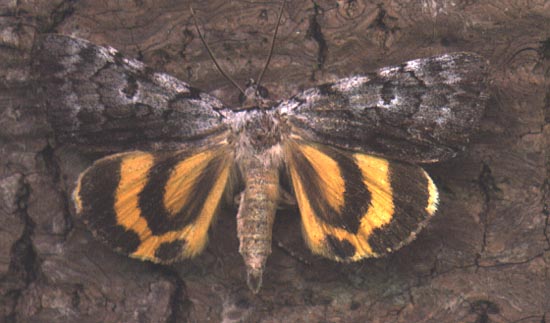
The Sordid Underwing,
posed scan by Bill Oehlke
(Montague, P.E.I., August 25, 2002).
This site has been created by
Bill Oehlke at oehlkew@islandtelecom.com
Comments, suggestions and/or additional information are welcomed by Bill.
| TAXONOMY:
Superfamily: Noctuoidea
Family: Noctuidae
Group: Noctuinina
Subfamily: Catocalinae
Genus: Catocala, Schrank, 1802
|
DISTRIBUTION:
Catocala sordida has also been confirmed in
Arkansas,
Illinois,
Indiana,
Kentucky,
Maryland,
Massachusetts,
Michigan,
Minnesota,
Missouri,
Nebraska,
New Hampshire,
New Jersey,
New York,
North Carolina,
Ohio,
Pennsylvania,
Rhode Island,
South Carolina,
Tennessee,
Virginia,
West Virginia and
Wisconsin.
The forewing is lighter along the costa and darker along the inner margin. Dark medial lines are especially evident through the lighter shades
near the costa. The outer black band of the hindwing is broken near the anal angle.
Catocala sordida, Canadian Biodiversity Information facility.
| 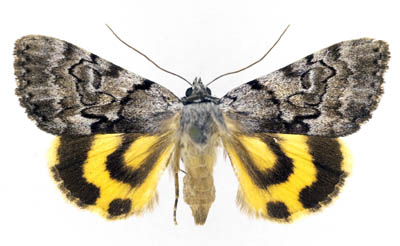 |
This species is quite similar to Catocala gracilis. I made the determination on the moth to the right based on dark scaling along
the inner margin limited to median area (more extensive in C. gracilis), submarginal
"teeth" relatively short and blunt (sharper and longer in C. gracilis), and, when placing this image in close proximity
to both gracilis and sordida images, it seems an overall better match for Catocala sordida.
Catocala sordida, July 29, 2006, Peterborough, Ontario, courtesy of Tim Dyson; id by Tim, confirmed by Bill Oehlke.
| 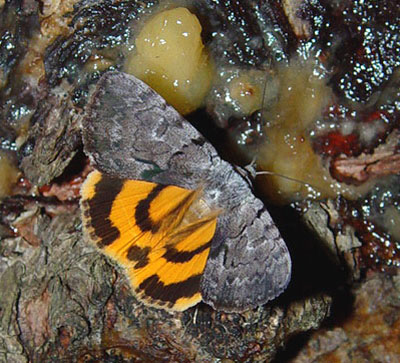 |
Further assessment might be possible based on this ventral image of the same moth.
Tim makes good use of a banana/beer mash to attract the moths. He also has amazing patience.
I got a chuckle, however, when Tim wrote "a nice warm night here, and the banana beer is flowing, (and so, of
course are the Catocala).
Had this little beauty a couple of hours ago, (and another a lot like it, though the first one flew from bait and hit me in the corner of my mouth)."
It made me wonder if Tim has also been sampling the bait or a portion thereof.
| 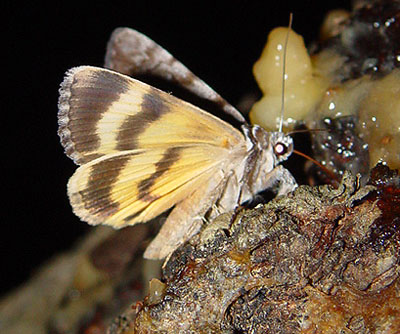 |
FLIGHT TIMES AND PREFERRED FOOD PLANTS:
Catocala sordida flies as a single generation with moths on the wing from May to September.
Moths come in to lights readily and also to bait.
The Catocala sordida caterpillar shows a preference for Celtis and Vaccinium.
Rick Gillmore writes, May 7, 2007,
"C. sordida is a blueberry feeder, not a celtis feeder. The following Catocala species are only blueberry feeders:
C. andromedae, C. gracilis, C. sordida and C. louiseae."

Catocala sordida, northern Georgia, June 9, 2009,
courtesy of Aubrey Scott.
ECLOSION:
Adults eclose from pupae formed under leaf litter.

Catocala sordida open, Peterborough, Ontario,
July 27, 2016, courtesy of Tim Dyson.
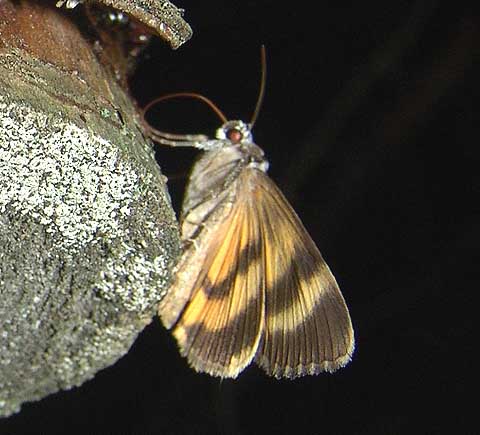
Catocala sordida verso, Peterborough, Ontario,
July 27, 2016, courtesy of Tim Dyson.
SCENTING AND MATING:
Catocala sordida females emit an airbourne pheromone and males use their antennae to track the scent plume.
EGGS, CATERPILLARS, COCOONS, AND PUPAE:
Eggs are deposited on bush bark in the summer and fall and hatch the following spring.
Larval Food Plants
Listed below are primary food plant(s) and alternate food plants. It is hoped that this alphabetical listing followed by the common
name of the foodplant will prove useful. The list is not exhaustive, although some species seem very host specific.
Experimenting with closely related foodplants is worthwhile.
Celtis
Vaccinium.....
|
Hackberry questionable
Blueberry (SG)
|
Use your browser "Back button to return to the previous page.
Goto Main Catocala Index
This page is brought to you by Bill Oehlke and the
WLSS. Pages are on space rented from Bizland. If you would like to become a "Patron of the Sphingidae/Catocala Sites",
contact Bill.
Please send sightings/images to Bill. I will do my best to respond to requests for identification help.
Enjoy one of nature's wonderments: Live Saturniidae (Giant Silkmoth) cocoons.

|

To show appreciation for this site, click on the flashing
butterfly to the left, a link to many worldwide insect sites. |








